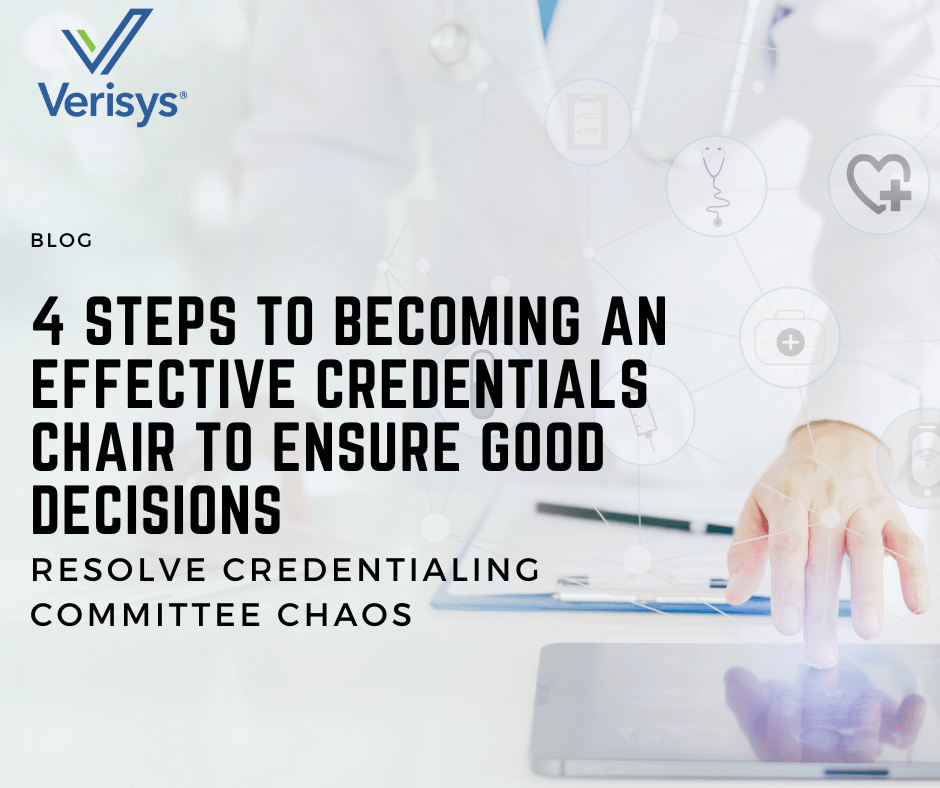– The best resource for monthly healthcare regulatory compliance updates. Compliance Updates: April 2024 Overlook: Licensure Compacts Other Legislation Board Updates Interstate Medical...


There is no doubt that being the chair of the credentials committee comes with great responsibility. Ultimately, deciding to appoint a physician to the medical staff falls on your shoulders.
When a credentialing committee doesn’t run effectively, it can jeopardize the quality of patient care and the hospital’s reputation. Below, we will look at a scenario that some credentialing chairs may relate to, as well as ways to improve the function of your credentials committee.
Hugh Greeley, the author of Hugh’s Credentialing Digest, provides the following example.
A new credentials chair struggled to perform the job well despite their best efforts. In this particular incident, four issues seemed to compromise the committee’s functions.
Many readers will recognize that while these steps may improve the situation somewhat, the long-term issue is a need for more top leadership, including the Board and MEC. In this case, ineffective leadership led to apathy and failure to provide:
As most of us can relate, changing hospital culture and adding clinical programs takes time. But, making necessary changes to improve your credentialing committee processes benefits the community you serve without compromising the quality of care.
Rather than relying on committee members, MSPs, and members of MEC, a credential chair can initially screen all applicants. By screening against primary source data, you can quickly identify candidates with red flags as designated by your organization’s rules, regulations, and bylaws.
That way, it’s not left to a visual scan of an application to determine whether an applicant should move further along the approval process. If an applicant is excluded by the Office of Inspector General (OIG) or listed on an abuse registry, they can be flagged early in the screening process, saving everyone time.
Verisys Connect® is a self-service data search portal that provides real-time data solutions for checking current and historical records through FACIS, Verisys’ proprietary database. A single search pulls the following from over 5,500 primary sources:
FACIS is the largest and most comprehensive sanction database. It is continuously updated with over 75,000 records added monthly and undergoes rigid quality assurance. In addition, our advanced technology uses matching logic to check for nicknames, alternative spellings, and various formats of hyphenated last names. All this gives you the most accurate results with a single click.
Learn more about how Verisys can assist your healthcare organization with pre-screening potential candidates.